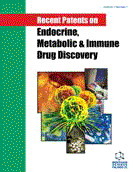Abstract
In the available literature, there are thousands of studies on peripheral nerve regeneration using many nerves of several animals at different ages with various types of lesions and different methods of evaluation at certain time of follow-up. Despite many experimental data and clinical observations, there is still no ideal treatment method enhancing peripheral nerve regeneration. In clinical practice, various types of surgical nerve repair techniques do not frequently result in complete recovery due to neuroma formation, lipid peroxidative damage, ischemia and other factors. Recently, a number of neuroscientists demonstrated that pineal neurohormone melatonin (MLT) has an effect on the morphologic features of the nerve tissue, suggesting its neuroprotective, free radical scavenging, antioxidative, and analgesic effects in degenerative diseases of peripheral nerves. At present, it is widely accepted that MLT has a useful effect on axon length and sprouting after traumatic events to peripheral nerves. Our studies using various experimental injury models clearly suggest positive effects of MLT on the number of axons, thickness of myelin sheath by inhibition of collagen accumulation and neuroma formation following traumatic events to peripheral nerves, myelination of developing peripheral nerve after intrauterine ethanol exposure. Nevertheless, further experimental and randomized controlled clinical studies are vital to identify the clinical use of MLT hormone. This is an overview of recent patents and current literature in terms of the effects of MLT on peripheral nerve regeneration based on a critical analysis of electrophysiological, biochemical and light and electron microscopic findings, in addition to functional observations.
Keywords: Melatonin, peripheral nerve injury, pineal gland, regeneration
 20
20





















